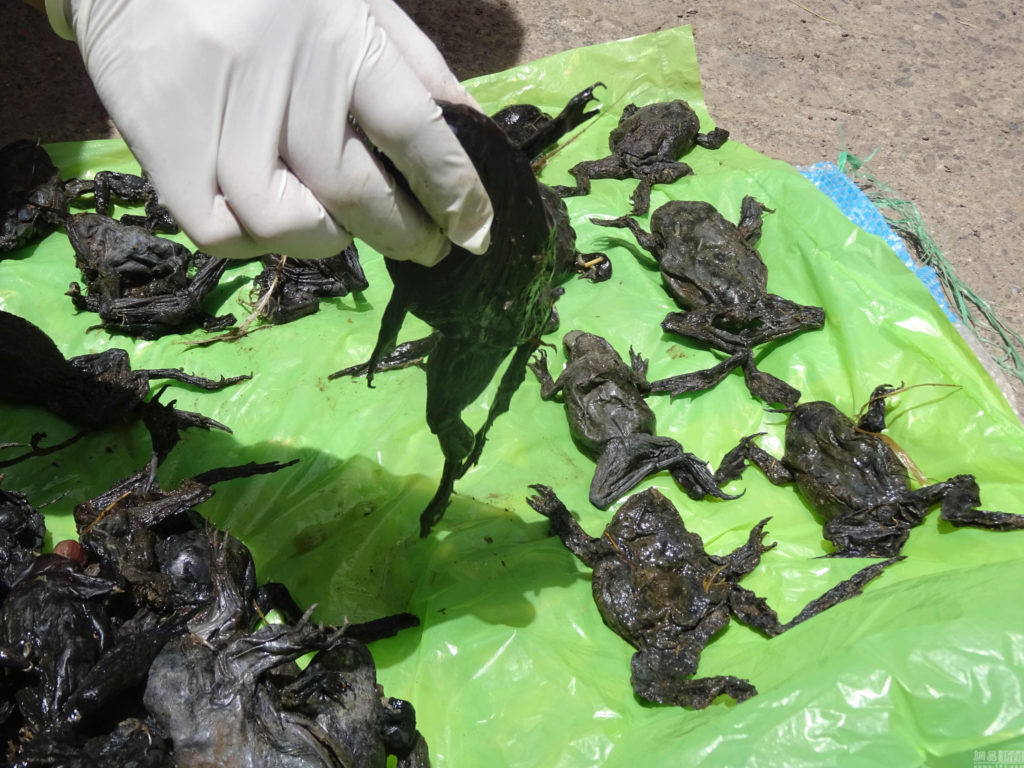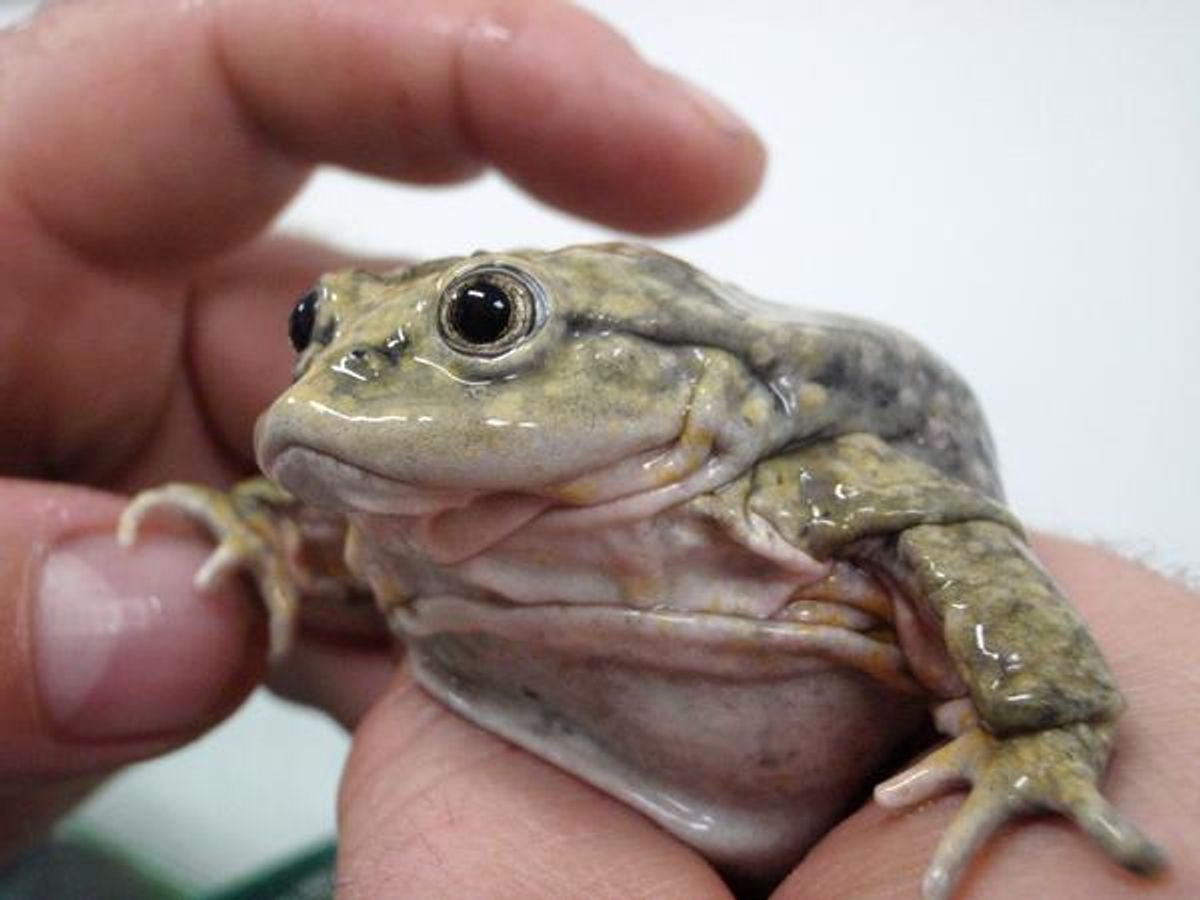The Peruvian government is investigating what they estimate to be about 10,000 dead Titicaca Water Frogs (Telmatobius culeus) found along the final 30 mile stretch of Peru’s Coata River, which feeds into Lake Titicaca.
The Titicaca Water Frog — the Latin name for which “translates as ‘aquatic scrotum’ on account of this species’ multiple folds of baggy skin, designed to enhance oxygen uptake in its cold water habitat” — is a massive amphibian that lives in the freshwaters of Lake Titicaca and its tributaries. The IUCN lists the species as critically endangered. According to the NGO Amphibian Survival Alliance, the frog's numbers have declined drastically in recent years for a number of reasons:
The Titicaca Water Frog ... is endemic to Lake Titicaca in Peru and Bolivia. It is a wholly aquatic species, breeding in shallow waters close to the shoreline. It was previously common, but has declined massively due to the over-harvesting of adults, the presumed predation of larvae by introduced trout, water extraction from the lake, and domestic and agricultural water pollution.
This announcement by the Peruvian government follows a campaign organized by a local environmental action group called the Committee Against the Pollution of the Coata River, which says increased sewage runoff is the main culprit, as reported by the BBC:
The Committee Against the Pollution of the Coata River told the AFP news agency that the Peruvian authorities had failed to address a serious pollution problem. Activists took about 100 dead frogs to the central square in the regional capital, Puno. "I've had to bring them the dead frogs. The authorities don't realize how we're living," protest leader Maruja Inquilla told AFP. "They have no idea how major the pollution is. The situation is maddening."
Maruja and the Committee Against the Pollution of the Coata River argue that a sewage treatment plant is required to save not only the river’s ecosystem and wildlife but also residents of the area. Maruja alleges that the Peruvian government is apathetic about environmental concerns like this one. In their statement, Peru’s National Forest and Wildlife Service (SERFOR) reported that they had observed the presence of sewage in the river at the locations where dead frogs were found, adding that specialists associated with the Denver Zoo will be investigating the frogs’ cause of death (translated from Spanish):
The samples obtained by the [Technical Administration of Forestry and Wildlife], in coordination with specialists Elias and Roberto Enrique Ramos [of the] Denver Zoo, will be evaluated to determine the [cause of] death of the specimens and initiate the corresponding investigations.

